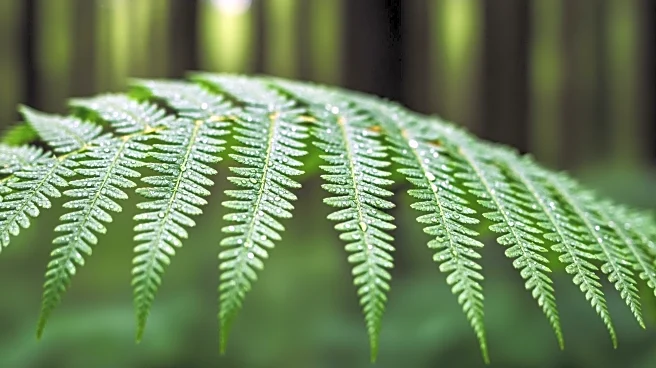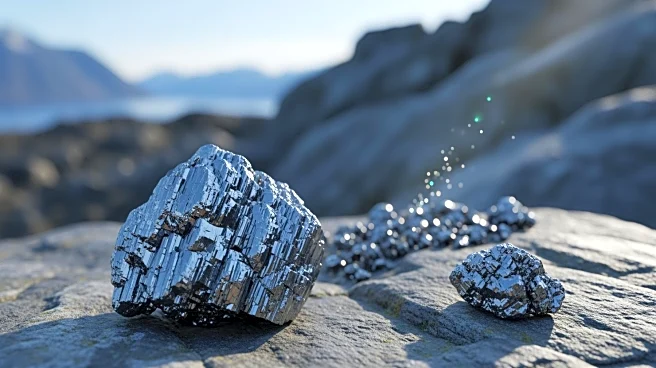What's Happening?
A significant discovery in South China has revealed that the Blechnum orientale fern can form rare earth element (REE)-rich crystals, offering a potential sustainable alternative to traditional mining
methods. This plant-based mining, known as phytomining, could revolutionize the extraction of these critical minerals, which are essential for various industries, including electronics and green energy. The study, published in Environmental Science & Technology, highlights the fern's ability to absorb and crystallize REEs within its tissues, forming monazite crystals. This process could provide a greener method for obtaining rare earth elements, traditionally extracted through environmentally damaging practices.
Why It's Important?
The discovery of the Blechnum orientale fern's ability to form REE-rich crystals is crucial as it presents a sustainable alternative to conventional mining, which often involves toxic chemicals and significant environmental degradation. Rare earth elements are vital for manufacturing technologies such as wind turbines, electric vehicle batteries, and smartphones. As global demand for these elements rises, driven by the push for renewable energy, phytomining offers a less harmful extraction method. This could reduce reliance on traditional mining operations, minimizing land damage and pollution, and potentially transforming the mineral extraction landscape.
What's Next?
The implications of this discovery suggest a shift towards more sustainable mining practices. Researchers will likely continue to explore the capabilities of the Blechnum orientale fern and other potential hyperaccumulators. This could lead to the development of bio-based mining techniques that are both environmentally friendly and economically viable. As the demand for rare earth elements continues to grow, phytomining could become a standard practice, providing a solution to the environmental challenges posed by traditional mining.
Beyond the Headlines
The ability of plants to form complex mineral structures like monazite could lead to innovative bio-based mining techniques. This discovery not only highlights the potential for sustainable mineral extraction but also opens avenues for further research into how different plant species might be used to accumulate and crystallize other critical minerals. Such advancements could significantly impact the future of resource extraction, promoting environmental sustainability and economic feasibility.











